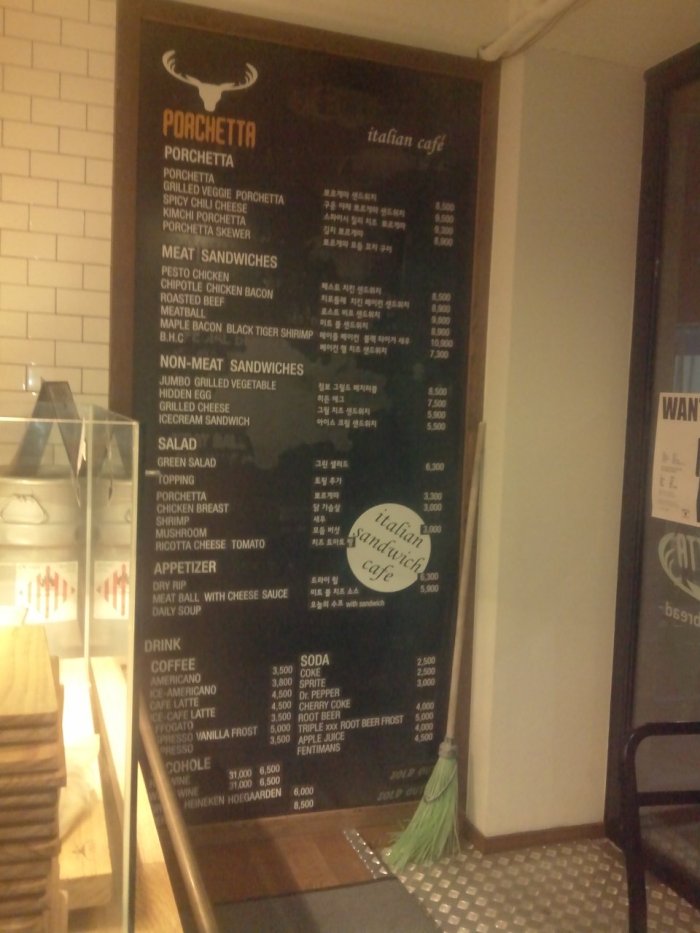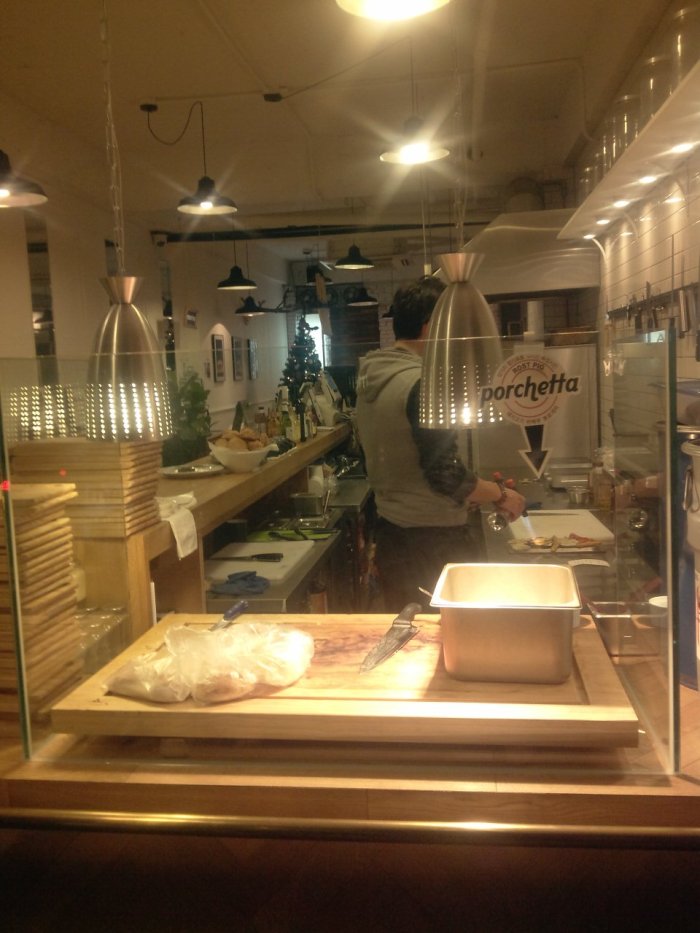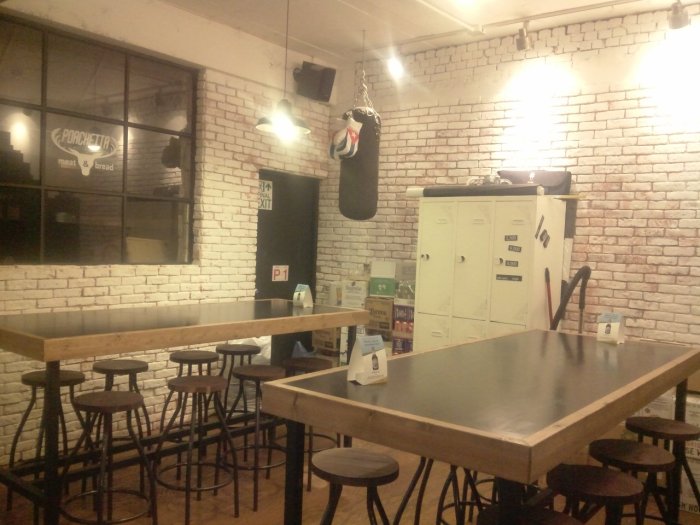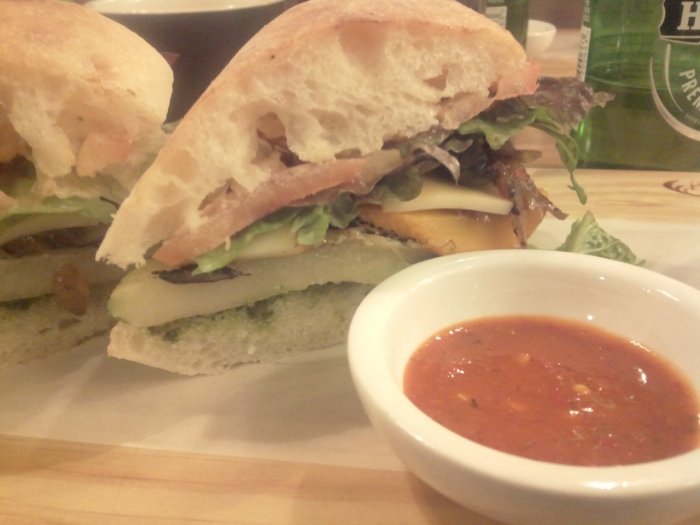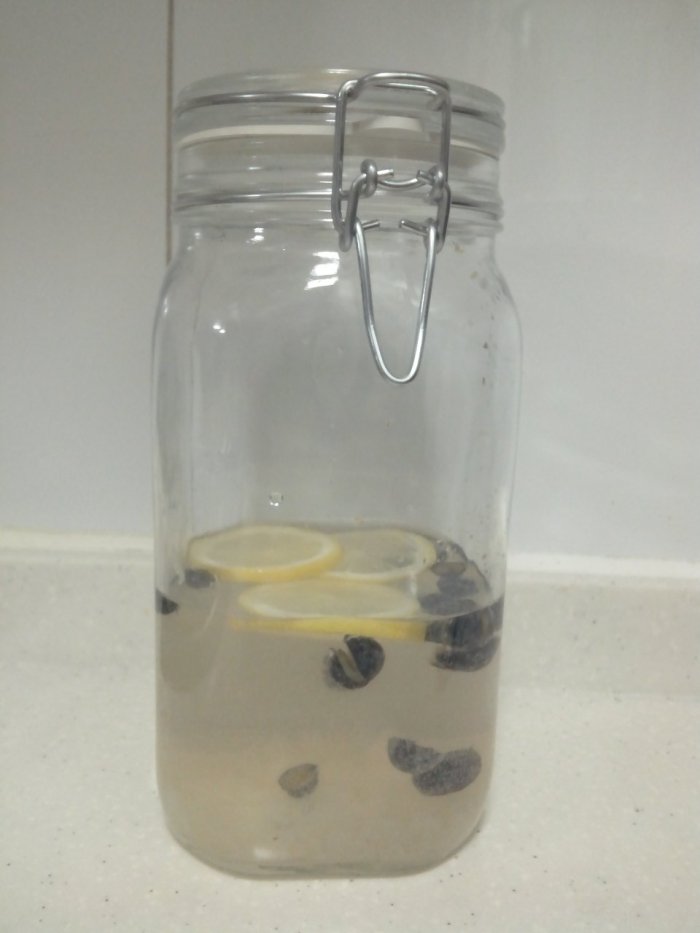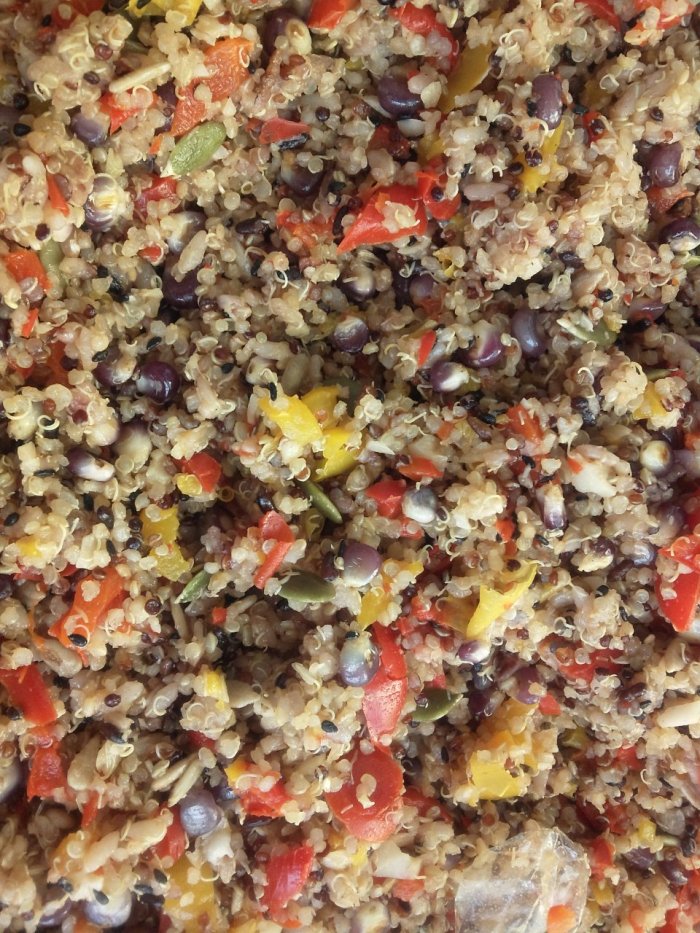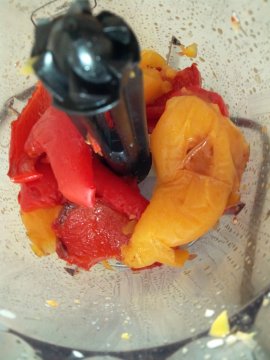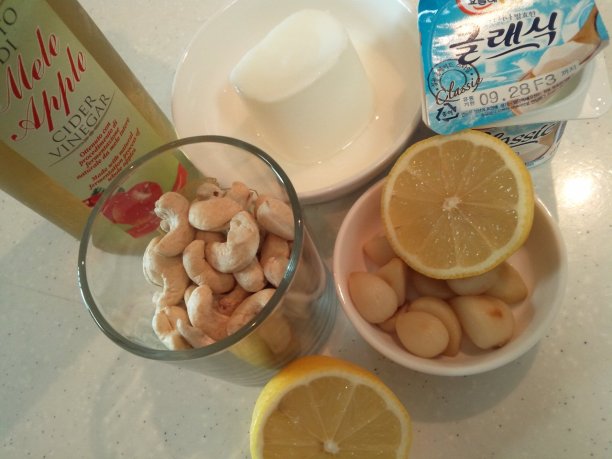Posts Tagged ‘vegetarian’
Porchetta: A brilliant sandwich spot for a vegan!
I’m serious. I’ve had THE best vegan sandwich of my life here. And I’ve sampled them around the world, Australia, England, Sweden, Laos, Spain to name a few.
I’d been craving a sandwich for a few weeks, yet for reasons of time and a slightly OCD’ish manner of not settling for sub-par food, the craving had remained unfulfilled. However, to be perfectly honest, after finishing up a particularly stressful Sunday of work, when a co-worker suggested ‘Porchetta’ for dinner, I was less than impressed. Mmmmm, sure I thought, I’ll just have the porchetta sandwich, minus the porchetta.
Oh…..how I was wrong….flip the menu, order number 10, hold the cheese, choose the sambal dipping sauce and wash it all down with a Hitachinonest Espresso Stout (whilst I love this beer – odd choice, they should’ve had at least an ubiquitous Peroni?)
Who would’ve ever thought that the most fulfilling, perfectly grilled fresh vegetables tossed in a light olive oil and herb dressing sandwich would come from Korea, and more specifically, a sandwicherie that specialises in Italian Porchetta – which my fellow dining partners told me was also the best porchetta they’ve had.
This new generation of Korean entrepre-restrauneurs (yeah I’m making words up here – but you get it yeah, in fact – you love it, oh yeah!) are well travelled and don’t do things by halves. If they want to open a boulangerie, they’ve been to Paris, learnt from the artisans themselves, and bought the french flour back to prove it (Alaska in Garosugil uses only French flour). If they want to open a pizzeria, they go to Naples, learn the craft to form a pizza straight out of Italy that isn’t comletely covered in yellow cheese and contains fresh red sauce and real basil (Blacksmith Pizza, Jongno – not the chain that is everywhere, but the small, kitscho restaurant aptly named because he is an actual blacksmith)
And if they want to open a Porchetta Sandwicherie – I’m guessing they’ve travelled to Italy, or at least have an understanding of what makes up a great sandwich.
Essentials to a great sandwich
1. The bread. It’s a deal breaker.
Should be soft, yet chewy. Hold the crusty baguettes for balsamic and olive oil dipping parties.
Filling to bread should not be in even ratios – think apple pie.
Filling to bread; 2:1.
I would’ve preferred wholemeal, but as this was a pillow of goodness, I’m not complaining.
2. Fillings. It’s a ball breaker.
You can’t polish a turd. No matter how good the bread is, it won’t camouflage poor quality fillings or weird combinations (although I do love crisps and vegemite – but I’m not selling it)
They need to be fresh, abundant and proportionate. You don’t want to be tasting all onion wondering where your damn semi dried tomato went too, considering that’s what jacked the price up to ₩8,500.
Several times I stopped to just examine the fillings of the sandwich, I was amazed at the variety and freshness of the fillings, roasted eggplant, zucchini, pumpkin, potato, mushroom, fresh tomato – wow.
3. The spread.
Needs to be tasteful and moist.
With a plethora of condiments, fancy butters, jams, relishes, mustards and mayo’s out there, we’ve come a long way from humble margarine beginnings.
The spread needs to be tasted, but not overpowering. Complementary yet not competing with the fillings.
A light basil pesto was used which led to a discussion of “How good is this basil pesto!”
4. The drip.
Like any good burger, a hot sandwich needs to have some guts and it should be messy, juices running down your hand as you eat it.
I don’t know why exactly, a testament to its freshness perhaps?
5. And now apparently, a dipping sauce.
I was just going to write, I’m not one to dip….but thinking back to my childhood I’ve fond memories of Le Snak, Dunkaroos, Yim Yam’s (who doesn’t remember the disappointment when you found out the dipping chocolate wasn’t the length of the sticks?) but dipping a whole sandwich?
What the?
And somehow, with all the different flavours of the vegetables and the basil pesto, the sambal dipping sauce, more sweet than hot – kind of like red capsicum than red chilli, went amazingly well.
The lowdown:
Jumbo Grilled Vegetable sandwich ₩8,500
Ask them to hold the cheese to make it vegan
I highly suggest the sambal dipping sauce.
Where:
Noksapyeong.
Take Subway Line 6 to Noksapyeong Station, exit 2. Walk straight for 500 metres take the underpass to the other side of the street. Take the street right from Noxa and it’s on the left hand side about three doors down (hmmm, maybe 5 but I just wanted to remind you all about that mediocre 90’s soft rock band)
Water Kefir: Stage 1
Lately I’ve become interested in fermented food products, probably a result of being surrounded by hundreds of kinds of kimchi and also learning how my friend, Hiromi, makes her own miso.
The earliest record of fermentation dates back as far as 6000 B.C. in the Fertile Crescent—and nearly every civilization since has included at least one fermented food in its culinary heritage. From Korean kimchi and Indian chutneys to sauerkraut, yogurt and cheese, around the globe cultures have crafted unique flavors and traditions around fermentation to avoid spoilage in times of abundance, so it could be savoured in times of famine.
Traditional lacto-fermentation utilizes the microflora present on vegetables and a lactic acid bacteria starter culture. However, in large-scale food manufacturing practices, vegetables are washed in diluted chlorine solutions to destroy or inactivate existing microflora, and acetic acid (which, along with water, is a main component of vinegar) is used instead of lactic acid. Of the few commercially available pickles that are lacto-fermented, most are heat processed or pasteurized to create a sterile product. Others are “desalted” or rinsed, likely removing any beneficial bacteria that may have been present.
More incentive to make your own kimchi or fermented products.
The health benefits of fermented products are quite impressive; restoring balance to the levels of proper bacteria in the digestive tract, cleaning the body of antibiotics and reducing acidic levels, the good bacterias help fight off pathogenic microorganisms (ie: viruses), improves the immune system and metabolism as well as boosting overall energy levels.
However, most importantly, fermented foods = full on intense flavour! Think of the strong flavours of sauerkraut, kimchi and umeboshi plums.
A rundown of common fermented foods:
Kimchi is a traditional Korean lactofermented condiment made of cabbage and other vegetables and seasoned with
salt, garlic, ginger and chili peppers. Most Asian diets include a daily portion of some kind of pickled vegetable. Lacto-fermentation occurs when sugars and starches are converted to lactic acid by the lactobacilli that are prevalent in vegetables and fruits. The proliferation of lactobacilli in fermented vegetables enhances their digestibility and increases vitamin levels.

Kombucha is a culture of symbiotic beneficial bacteria and yeasts which originated in China nearly 2,000 years ago. This culture is brewed with tea and sugar and fermented into a sweet and sour, slightly effervescent drink. Kombucha contains many amino acids and B vitamins in addition to its bountiful population of beneficial microorganisms, and is believed to be an excellent stimulant to digestion and the immune system.

Miso is made by adding an enzymatic culture to a base of soybeans and, often, a grain (usually wheat, barley, or rice). Salt and water are the only other ingredients of natural miso. Through aging, the enzymes reduce the proteins, starches, and fats into amino acids, simple sugars and fatty acids. It also contains lactobacillus bacteria which aid in digestion. Miso is used as a soup base but is also good in sauces, gravies, dips, spreads, dressings and marinades. Always use unpasteurized miso, and don’t boil it; high temperatures will kill the beneficial microorganisms. Miso is a superb source of easily-assimilated complete protein.

Sauerkraut is a cabbage that has been salted and lacto-fermented over a period of weeks. Latin American cultures make a version of sauerkraut called cortido. The beneficial bacteria so abundant in sauerkraut produce numerous helpful enzymes as well as antibiotic and anti-carcinogenic substances. The main by-product, lactic acid, not only keeps vegetables and fruits in a state of preservation but also promotes the growth of healthy flora through out the intestine.

Umeboshi are salty sour lacto-fermented pickled plums (ume) from Japan. Umeboshi are highly alkaline and used to neutralize fatigue, stimulate the digestive system and promote the elimination of toxins. They are valued for their natural antibiotic properties and ability to regulate intestinal health.

Sourdough is a bread product made by a long fermentation of dough using naturally occurring yeasts and lactobacilli.

Tempeh is an ancient Indonesian staple made from cooked, split, fermented soybeans bound together with a mold that makes soy easier to digest and provides many valuable vitamins. Tempeh is an excellent protein source for calcium and iron, and the mold produces an antibiotic to increase the body’s resistance to infections.

Pickles
A wide range of vegetables (and sometimes fruits, nuts, seeds, animal products and other ingredients) can be lactofermented using salt, temperature and a controlled environment for a period of time to make pickles. Most modern pickles, however, are made using vinegars and/or heat processing, which limits or eliminates the beneficial bacteria and enzymes that result from lacto-fermentation; check the label to ensure pickles are fermented.
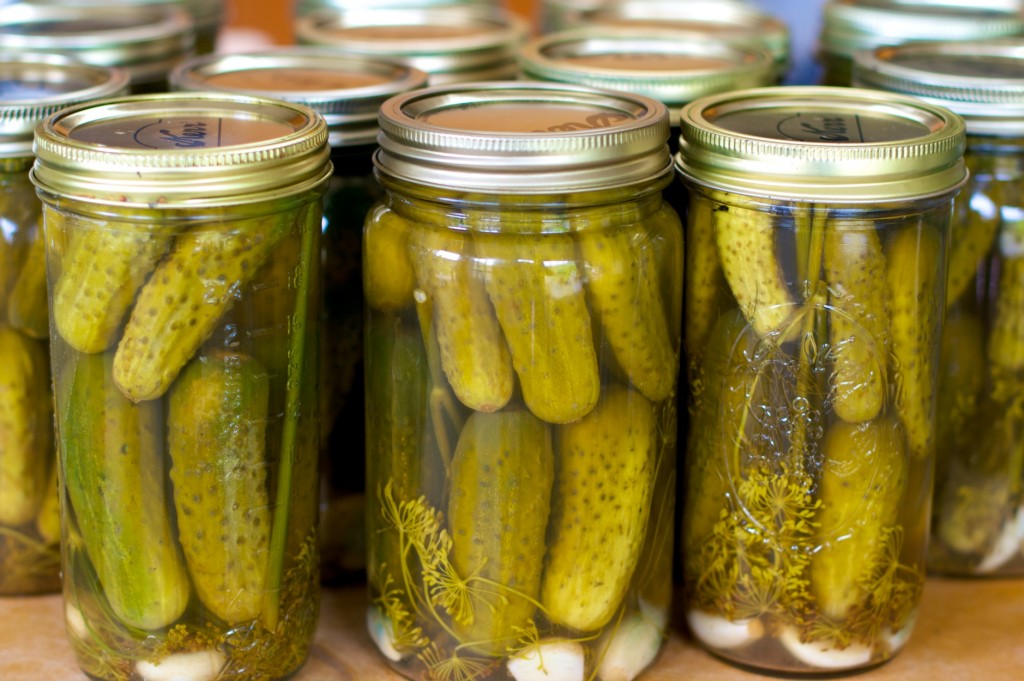
Yogurt & Kefir
Yogurt and kefir consist of milk that has been inoculated with live bacterial cultures. These cultures convert the milk’s lactose sugar into lactic acid. For people who have difficulty digesting the lactose in milk, cultured dairy products may be easier to digest because the live, active cultures produce lactase, which pre-digests the lactose.

So, the above is yogurt kefir. Kee-fur. Like Kiefer Sutherland. Y’know, that dude from 24, Melancholia?? He was the bully in Stand By Me…
Anyway. Being partial to all things dairy, and the ridiculous amount of sugar in those tiny bottles of probitotics that this one ajumma near my busstop always tries to push on me (I’m a pusher Cady), some late night researching led me to water kefir.
Water kefir, scientifically known as tibicos, is similar to yogurt kefir, except instead of feeding off the milk lactose, it feeds off sugar lactose. Now, I know this sounds like it seemingly contradicts what I said above about trying to avoid sugary probiotic drinks, however, the kefir crystals eat up most of the sugar, which is only 2 tablespoons to 3 cups of water. The resulting brew is definitly not sweet.
So what exactly is it?
Basically, it’s a bacterial yeast culture (mmm…sounds delicious) that looks like bath crystals. When added to mineral water mixed with sugar, the kefir grains eat the sugar producing strains of probiotic bacteria which carbonates the brew. If brewed correctly and in a stable environment, the grains will also multiply – allowing you to share the kefir love around.
I got my grains online from savvy teas, and if all goes well, I’m more than happy to share 😀
Once you’ve got the grains it’s so easy to make:
Water Kefir
Ingredients:
Water Kefir grains (2tsp dried grains or 1/3 cup wet grains)
3 cups mineral water (if using tap water, boil or set out overnight to remove/evaporate chlorine)
2 tbsp organic brown sugar
1/2 lemon – sliced
handful of raisins, banana, berries (encourages fermentation)
Method:
1. Place the grains, sugar, water and fruit in a sterilised glass jar with either a screw top or flip top lid.
2. Place in an area out of direct sunlight. Some suggest wrapping in towels or ‘burping’ the jar every now and then as the carbonation can build up and lead to some horror glass smashing stories. Also, avoid the use of metal spoons (pure stainless steel is ok) as this will affect the sensitive little grains.
 Bubbles of carbonation one hour in!
Bubbles of carbonation one hour in!
Stay tuned for the next update: the second brew – experimenting with flavours!!
Summer’s over but semi-dried tomatoes are here forever
 The taste of the Mediterranean – homemade here in Korea, for 1/4 of the shop price
The taste of the Mediterranean – homemade here in Korea, for 1/4 of the shop price
Although the leaves are yellowing, the air is more crisp and the time spent frolicking in the sun (who has the time to frolic? But the idea, or word is lovely) is becoming shorter, I’ve found a way to savour the taste forever!
Like everything exotic and non-korean in Korea, avocados, watermelon, baby spinach to name a few, the price is excruciating, unbelievable, ridiculous. Semi-dried/sun-dried tomatoes are no exception. ₩9,000 on special? ₩13,000 – ₩20,000 for a small jar?
Sure, I’ve nothing better to spend my money on than eating.
Back home I’m used to picking up a couple of hundred grams for $3 – $5, of varying dried-ness, immersed in different oils or vinegar’s, with different herbs and accompaniments, full fat, fat-free. Pro-choice tomatoes, oh yeah!
So, figuring it’s just tomatoes, olive oil, garlic, spices, sun and time, I thought, I could make my own. Except, ah, the long hot summer days are over here – thank my sweat-free brow – so what to do, what to do….
Oven-dried tomatoes! Looooooong, sloooooooow dehydrated tomatoes result in the sweetest tomatoes with a soft inside, encased by a not-too-hard, ever so slightly chewy and dried out shell. Dehydrating them with a dash of olive oil that has been infused with Himalayan rock salt, pepper, garlic and herbs, enhances each flavour, bringing out the sweetness of the tomatoes.
 I used cherry tomatoes here, because that’s what the ajumma was selling near my flat that day
I used cherry tomatoes here, because that’s what the ajumma was selling near my flat that day
Although I don’t label myself with a food label anymore such as vegetarian, carnivore, vegan, raw foodist; I eat 80% vegan and raw as much as possible (although since preparing samples and market prep for whole*istic snacks and desserts, my diet has changed to 80% DESSERTS! HELP!!) and meat/fish if my body truly is craving it or someone has been so nice as to cook for me.
I found that it has been easier to make more conscious decisions this way, without placing limitations and expectations on myself and removing the ‘banned food’ list – which actually makes me want them even more.
Bu,t I digress.
A dehydrator is just as vital to a raw foodist as the holier-than-thou blender, the VitaMix – which you cannot get in Korea! Here I was ready to part with my ₩600,00 on a blender, but it’s not even possible. (Post to follow on what I did actually get)*be warned – it will be a rant, as after having acquired the most powerful, expensive blender in Korea, it DIED on me within 24 hours, 2 batches of energy noshies, 1 pie crust and halfway through a ‘cheese’cake…breathe in, breathe out….I am floating on al lily pad down a….one day, it lasted one day!!!! …..down a clear, tranquil blue stream….. But as I’d just received a new large, 4 rack oven, I had been reading that food prepared at 48°C or less, can technically be considered ‘raw’.
Which isn’t very hot at all. I’m sure the Bikram yoga room has been hotter than that before.
So anyway, if you’ve got an oven that can function at 48°C, lots of fresh tomatoes (it’s too time consuming to just do a punnet), and lots and lots of time for these babies to dehydrate – read on my friend, read on……
 All you need is love! And time, and a big ass oven.
All you need is love! And time, and a big ass oven.
Oven-semi-dried tomatoes
Ingredients:
1 kg tomatoes (I used cherry tomatoes)
1/2 cup olive oil
3 cloves garlic, finely chopped
1/2 tsp Himalayan rock salt (this is more ‘salty’ than salt, so use less at first – then to taste)
1 tsp black pepper – 5 grinds?
1 tsp mixed herbs (I used a mix of basil and Italian parsley)
*Add all spices/seasonings to taste. I LOVE garlic so my recipes are heavy on the garlic, taste as you go, to your liking. Add anything you like. Just remember, the dehydrating will bring out the flavours more.
Method:
1. Combine all ingredients, except tomatoes, in a screw top glass jar.
Shake it, shake it like a polaroid picture.
2. Wash tomatoes. Cut in half. If using cherry/grape tomatoes place on greaseproof paper lined baking tray, cut side up.
If using larger tomatoes, scoop seeds out (can add to a smoothie, dip, pesto, sauce, eat, whatever – just don’t waste it)
3. Drizzle some of the oil over the tomatoes.
I used about one tablespoon per line of tomatoes.
There should be about 1/4 cup of oil, more or less, remaining for you to sit the tomatoes in after dehydrating, or to use as a dressing. Beautiful!
4. Place in oven at 45°C.
For 2 large trays of cherry tomatoes, they took 5 hours and were fully dried.
4 hours would create a more juicy, semi semi dried tomato.
Will keep in a sealed jar, covered in the remaining oil for a month? 2 months? Although, I don’t think they’ll last that long….
 Ta-da!! The finished product – 5 hours on
Ta-da!! The finished product – 5 hours on

Drizzle garlic olive oil. Whiz into a pesto or dip. Top a salad.
Eat. Straight up.
 I blended mine into a basil, sunflower seed pesto and served atop fresh squash, black sesame tofu (I’ve never liked tofu until moving to Korea – its baffling me -)
I blended mine into a basil, sunflower seed pesto and served atop fresh squash, black sesame tofu (I’ve never liked tofu until moving to Korea – its baffling me -)
Looks like a raw, vegan nachos???
For 2 large trays of Roma tomatoes, well, they’ve been in for 3 hours last night, sat overnight, and we’re up to hour number 2 as we speak.
카페 수카라 Cafe Suッkara & 파절이 Pajeori
Tonight I had the pleasure of meeting up with my good friend, S, at Suッkara in Hongdae.
S is an inspiring and amazing lady. Introduced by a mutual friend we share a love of Australia and design, and recently found out that we also share a passion for a holistic way of life centred around organic farming and good, slow food.
She is also involved with 파절이 (Pajeori) which is a non-profit organisation focused on organic farming. Currently Pajeori have a large farm, 3000m2 if I remember correctly, on Yeouido Island, Seoul and are harvesting over 30 different kinds of vegetables and herbs.
It is a small group that is very passionate and proactive in clean, organic produce. Currently they are working with several cafes/restaurants around Seoul, and Suッkara in Hongdae is one of them.
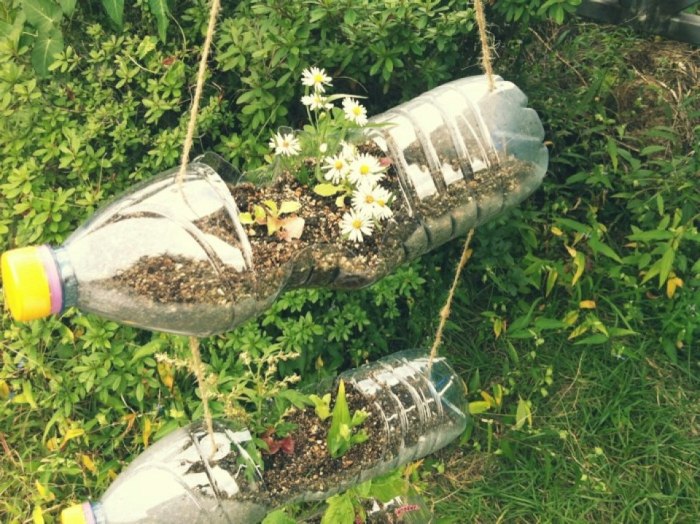 파절이 Pajeori on Yeouido. ‘Up’cycling: reusing old plastic bottles as plant pots.
파절이 Pajeori on Yeouido. ‘Up’cycling: reusing old plastic bottles as plant pots.
Suッkara is a beautiful, restaurant with beautiful food and drinks. The dim lighting creates a subdued atmosphere, whilst the open kitchen evokes a homely ambience. We were there at around 6:30pm, and the restaurant was calmly abuzz with people seated all around the low bar encompassing the kitchen and at the well spaced, kitsch tables and chairs.
Suッkara was established around 4-5 years ago, and with a focus on high quality, homemade, organic food, it’s no wonder why. The drinks list is extensive with teas, sodas, wines and cocktails to a variety of appetisers, meals and desserts.
Caught up in conversation, I must admit that although I read the menu (in English too) thoroughly, details are escaping me now. Vegetarian and vegan friendly, there were options for each meal to omit or substitute dairy or meat. Options ranged from curries, salads and were well priced, with our meals at ₩10,000 – ₩12,000 each. Sizes were very generous and accompanied with interesting pickled side dishes and soups.
I had a delicious japanese plum and ombashi soda, which was lightly carbonated and very refreshing. It was clean and tart and only mildly sweet.
I ordered the special menu item, which was absolutely amazing. A whole baby eggplant had been steamed and then roasted and topped with a marinara sauce and a sprinkling of feta cheese. I can’t for the life of me figure out what was in the marinara, it almost had a meat-like texture and the flavour was rich and deep. It was coupled with a bean and gingery rice, which complemented the sweeter and softer texture of the eggplant. It also came with a refreshing, cold pumpkin soup, which wasn’t sweet like some can be. It became the perfect extinguisher when I stupidly decided to eat half of the small, fire roasted green chili.
 Special menu order: Eggplant and ginger rice
Special menu order: Eggplant and ginger rice
S ordered the vegan platter which was as amazingly delicious as it was beautifully presented. On the wooden platter was a selection of thinly sliced cranberry and nut sourdough bread, cashew cream cheese, chickpeas, salad and a velvet-like shiitake mushroom and vegetable soup. I could taste a strong, earthy tofu flavour which matched the rustic bread perfectly.
S’s boyfriend ordered the cheese omelette which came with purple rice and salad. Never, ever in my life have I been floored by an omelette. Australia is boss for brunch so I’ve had my fair share of omelette’s. But this was out. of. this. world. So smooth, so light, so fluffy. The omelette glistened with a shininess that had me worried it would be too oily, but any oily-ness dissipated into deliciousness. Totally delectable, I can see why it is one of S’s menu favourites.
Whether alone, with friends or for a place to impress a date, Suッkara is the destination! I will be back for sure. The only problem will be deciding what to eat next!
Suッkara also runs workshops. The next one will be Monday 8th October at 7ish where you can learn how to make their beautiful pickled vegetables.
How to get there: Hongik University Subway Stop: Line 2. Go out exit 8. Immediately take first street right and walk two blocks until the road ends. Turn left at the intersection and take first right down the long main road. Walk the length of the road (around 6 blocks) and turn left. Suッkara is on the left. If you come to another road on your left, you have gone too far.
Address: 서울시 마포구 서교동 327-9, 산울림소극장 1층
Phone: 02-334-5919.
Opening hours: 11:00~24:00(Last order 23:00)
Keen, yah? For Quinoa?
Quinoa.
/ˈkēnwä/
Keeeeeeeeen waaaaaaaaaaaaaaaaaaaaaah.
Say what?
I always thought it was pronounced, “Kwin-o-a”
Kind of like “Hermes” was Hermees instead of Emez. Or “Givenchy” was Givenchee instead of Shee-von-shee.
Parlez-vous.
But I’m from ‘Straya mate. We have a collective word for all of you, youse. “Whad d’youse wanna ‘av for lunch ‘ey? Vegemite sanga’s?”
Anyway, apparently it’s keen-wah. And it’s delicious. And it’s healthy as. And if you buy the Rainbow quinoa, or mix the yellow, red and black varieties you can get a bright and festive mix! But what makes this humble little grain the ‘Supergrain of the Andes’?
Well, my friends, scientifically speaking, Chenopodium quinoa is a seed, most closely related to the beets, spinach and tumbleweed family.
It’s a psuedocereal, looking all grain-like and stuff, wanna be hanging out with the couscous, burghul and polenta’s. Quinoa is like that ridiculously smart, beautiful, perfect student who everyone wants to be like. In Korea, where competition is fierce there is a slang term ‘umchinah’ 엄친아 (son) or umchinttal (daughter) which directly translates to “mother’s friend’s son” and refers to that holier-than-thou-person you’ve never met but already hate because your mum pratts on about them all the bloody time. They can do no wrong, even their crap is gold-plated. And unfortunately, you are always compared to them “Why can’t you be like my friend’s son? He studied at Seoul National University and did post-grad at Stamford. Now he’s a dentist and drives a BMW 7 series. What have you done?”
But ah, anyway, back to quinoa. Unlike it’s wheat companions, quinoa is gluten free. However it’s high mineral and protein levels is what really makes it the “Supergrain of the Andes.” Take a look at the comparison with couscous below or here:
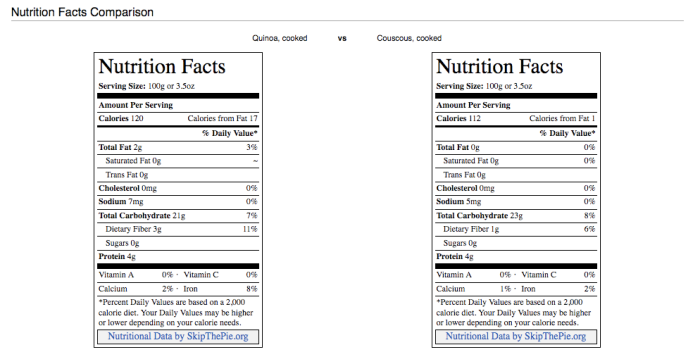 Quinoa vs Couscous overall nutritional info
Quinoa vs Couscous overall nutritional info
 Quinoa vs Couscous Mineral Content comparison
Quinoa vs Couscous Mineral Content comparison
Quinoa is the clear winner.
Let’s not mention that it is high in proteins and delivers all of the essential 9 amino acids with especially high levels of Lysine, which is essential for tissue growth and repair. These amino acids are generally found in animal products, making quinoa essential for vegetarian/vegan diets to ensure adequate protein intake. For example, an egg has approximately 5-6 grams of protein, 100grams chicken breast has 20grams protein. A typical serving of quinoa is about 1 cup, which is roughly 200grams, so a serving of quinoa has 8grams of protein. Not too shabby if you add in some beans, nuts, seeds and tofu.
As you can see from the tables above, quinoa is also high in fibre, magnesium and iron when compared with other grains.
Quinoa is also versatile, being able to be eaten sweet with yogurt, nuts and berries for breakfast or dessert, flattened and baked into crackers, rolled and grilled into burger patties or pressed and sweetened into energy bars.
Anyway, on this lovely Saturday afternoon, I decided to make a festive salad for my lovely friends.
Quinoa whole*istic crunch salad
Ingredients
2 cups organic quinoa
1 tsp salt
1 tsp onion powder
1/2 cup roasted garlic cloves
1 1/2 cups roasted capsicums
2 cobs corn (I used Korean purple corn cobs)
1 tbsp coconut oil
Crunch:
1/2 cup chopped cashews
2 tbsp sesame seeds unhulled
2 tbsp black sesame seeds/chia seeds/poppy seeds
1/2 cup pepita seeds
1/2 cup sunflower seeds
Method
1. Rinse quinoa. Add 3 cups of water and salt and bring to boil. Once it reaches boil, turn down heat to low, simmer for about 10-12 minutes, or until all water is absorbed and it fluffs up.
See beautiful video here if unsure how to cook quinoa.
2. Take quinoa off heat. Fold through onion powder. Stand and let cool. 
Rinsed, uncooked quinoa.
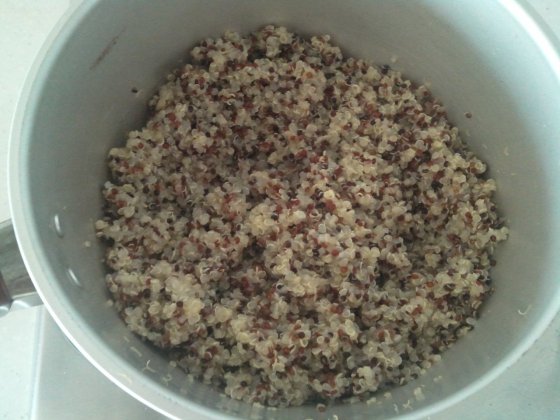 Cooked quinoa.
Cooked quinoa.
3. Take corn off cob. Rinse.
 Purple Korean corn cobs. Chewy. Delicious.
Purple Korean corn cobs. Chewy. Delicious.
4. Add corn and coconut oil to frypan and cook until corn begins to brown.
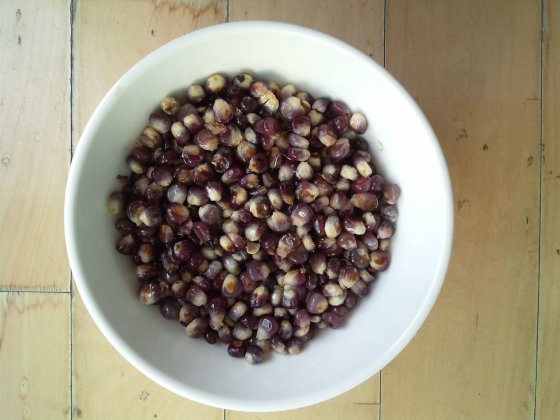 Amazing flavour. Amazing aroma. Reminds me of this Vietnamese street food, Bap Xao Tom Bo.
Amazing flavour. Amazing aroma. Reminds me of this Vietnamese street food, Bap Xao Tom Bo.
5. Add in chopped roast garlic, capsicum and corn and mix by hand.
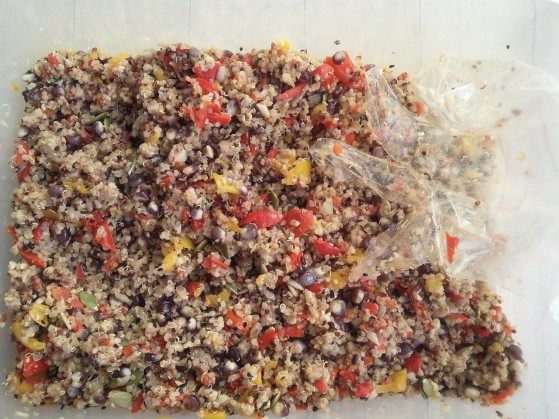
Sure sign you’re turning Korean: You mix things by hand with a plastic glove – and use scissors in the kitchen.
6. To make crunch: toast all ingredients except sesame and poppy seeds. Add these quick cooking seeds last, they only need about 1 minute.
Sprinkle over salad and mix through when ready to eat.

I also served this salad with a tangy dressing, that was so versatile and loved by one of my guests that he added it to everything we ate! Flattered.
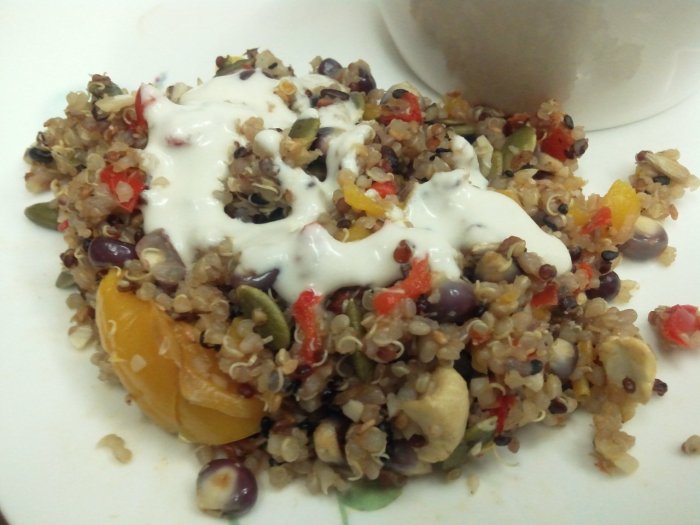
Tangy, *slutty dressing (*Easy as and goes with anything)
Can easily be made vegan, I only had plain yogurt on hand, and determined to work with what I had in my flat. Just substitute for almond yogurt/soy yogurt/silken tofu
Makes 2 cups
Ingredients
1 cup soaked, organic cashews
2x 85g tub yogurt*
*(whilst I usually buy plain yogurt with 5g natural sugar, I only had yoplait ‘plain’ yogurt which has a whopping 12g sugar, 7g added. I would suggest adding a tbsp maple syrup/honey if using good, plain yogurt)
1 tbsp apple cider vinegar
1 lemon – juiced
1/2 tsp salt
Method
1. Add all ingredients into blender/food processor. Blend the crap outta it until smooth. Refrigerate for at least a couple of hours or until it thickens.
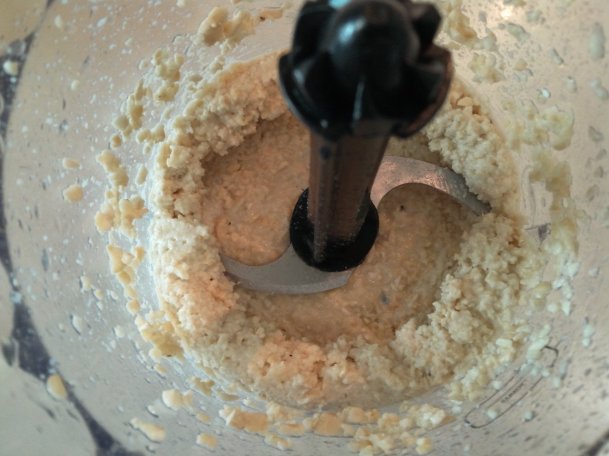
Blend, blend, blend. Will get much smoother than this.
2. Eat.
Too easy right? Told you it was a slutty dressing.
Food for thought
I have followed vegetarian and vegan lifestyles in the past in an attempt to be more proactive in my sustainable endeavours, however, what can I say…..I love meat, seafood, eggs and chocolate too much for it to be a life long commitment. Consider the theory surrounding great white sharks, once they get a taste for human flesh, they continue to seek it out. Perhaps this extends to humans as well, I think it is easier to live a vegetarian/vegan lifestyle if one has not eaten meat, or whose parents are also vegetarians.
Contrary to the outside perception of the Korean diet, it is not all meat bbq. Sure it is enjoyed regularly, perhaps once a week, but even then, the quantities are far less than what it looks like (it’s all the tiny bowls of vegetable side dishes collectively called ‘banchan’ that make it look like super sized), a typical serving of meat is around 100 – 150g, and a minimum of two servings must be bought by a minimum of two people (due to again, all the preparation involved in preparing banchan).
Hence, why one-person-me usually only eats bbq meat once a week if I can coerce my friends into it…and why most Koreans are desperate to be in a couple. They just wanna eat some friggen bbq meat yo!
But, I find myself eating a shit tonne less meat here than in Australia, mainly due to the unavailability of lamb, my go-to-number-one meat. I find I prepare and eat really simple things if I am eating at home, salads, eggs, soups, vegetables. Eating out here is much cheaper than Australia, and generally, more nutritious, but this is a whole other post.
So, I’m not advocating one lifestyle choice over the other, however, I do not condone the inhumane treatment of animals and always make a conscious decision to purchase organic meat that has come from animals treated ethically and wild, locally caught seafood.
Organic groceries are becoming more affordable and readily available in Korea, see my previous post here as are organic vegetarian restaurants. Finding a restaurant that serves organic, humane meat is more of a challenge unless you are willing to drop a serious amount of coin – akin to that of your first born’s university fund.
Seoul Restaurants:
Byeokjae Galbi (벽재갈비) – High quality, high cost Korean beef BBQ. The restaurant owns and maintains the hanwoo (korean cow) farm in Gyeonggi. Ph. +82 2 2058 3535
Goraebul (고래불) – Seafood restaurant. Receives their seafood fresh everyday from fishermen on the east coast of Korea. Ph. +82 2 556 3677
Gae Hwa Oak (개화옥) – Traditional korean restaurant with black Jeju pork and barley fed beef from a local farm in Jeollanamdo. Ph. +82 2 549 1459
Slobbie (까페 슬로비) – Slow Food, casual dining, great prices, great atmosphere. Traditional Korean food, ingredients sourced from local farmers. Ph. +82 2 3143 5525
Cafe des Verts – Organic tea and coffee, sandwiches, yogurts. Casual atmosphere.
*I’d really like to hear of some more, this is a lazy, half assed collection.
It takes 50,000 litres of water to produce 1 kilogram of beef.
It takes 1,000 litres of water to produce 1 kilogram of grain.Most of the grains grown in the world is given to cattle.
These grains could be going to third world countries to help prevent starvation.“The irony of the food production system is that millions of wealthy consumers in developed countries are dying from diseases of affluence – heart attacks, strokes, diabetes and cancer, brought on by gorging on fatty grain-fed beef and other meats while the poor in the third world are dying of diseases of poverty by being denied access to land to grow food grain for their families”
/jeremy rifkin
Meet Ricotta, I’m sure you’ve never met….
Like anything in life; gin, men, beef, to name a few, there’s the usual, the standard, the ordinary and then there’s top shelf.
I’ve never been a Ricotta connoisseur. Back home in Australia we are blessed with a myriad of cheeses; both imported and locally grown soft, oozy Brie, Camembert and stinky Livarot to hard Parmigiano Reggiano and aged, bitey Cheddar. And who can resist fried Haloumi wedged between lamb or simply dressed with a splash of lemon or the nutty, velvety texture of a sweet Emmental. Then we have a range of Feta cheese ranging from hard, crumbly and salty Greek Feta to creamy Danish Feta.
But Ricotta. It was always a hard, dried out cake-shaped catastrophe in the deli section of the supermarket or a watery mess in the pre-packaged section. Never was it a thick, rich, creamy luxury that demanded to be spread on a crispbread or the highlight of a salad.

I understand this is slightly different, Ricotta Salata, but with this is the general understanding of Ricotta Cheese in Australia.
And then I moved to South Korea, where dairy products run second to soy-based products, I’m guessing due to the high incidence of lactose intolerance. However, locally produced Korean cheese is predominantly produced as ‘Pizza Cheese’ which can be described as a fluorescent yellow, greasy, plasticy atrocity. Consequently, a decent, quality imported cheese ranges anywhere from ₩10,000 to ₩34,000. I’m not sure why, but imported food products have ludicrous taxes and markups here. Don’t even get me started on fruit. That’s a whole other post.
But, I digress.
Due to an intense craving for Feta cheese, albeit refusing to pay ₩10,000 for a mid-range quality cheese, I scoured the internet and stumbled across easy recipes for soft, white cheeses. Mainly Ricotta.
And, then, I found the Aston Martin of Ricotta. This Ricotta changed my life.
So, one Friday night, on the eve of a friend’s Saturday shindig, I decided to play cheese-god and forgo all social credibility to stay home and make cheese. And it is probably one of the best Friday night decisions I have made..
Never again will I even consider buying Ricotta, when it is so amazingly simple and quick to produce a batch with only 4 ingredients. Recipe adapted from here at Smitten Kitchen, via Salvatore Brooklyn. Be sure to check out this beautiful video as well from Salvatore Brooklyn to appreciate the entire process.
Photo’s of my cheese production will follow, both times I never considered I would end up blogging about my fucking cheese endeavours, hence no actual cheese making photos.
Stay-at-home-Friday-Night Ricotta
Ingredients (for 2 cups of Ricotta)
12 cups milk (I used skim 1.5%)
500ml cream
1 tsp salt
3/4 cup lemon juice (I used 3 lemons)
(You can halve or even quarter quantities, however once you’ve tasted it, you’ll also be trying to make as much of it as you can)
Method
1. Place milk, cream and salt in a large saucepan. Can fill very close to top as it will not boil and expand.
2. With a thermometer, heat milk to 88°C. This breaks down the proteins and whey in the milk.
3. Immediately take off heat and pour in lemon juice. Stir very gently twice.
4. Let stand for 10minutes and resist all urges to stir or poke around and see what’s happening! A thick layer of white curds should have formed on the top.
5. Gently pour curds and whey into a large, deep bowl lined with cheesecloth (alternatively I use a white t-shirt but stockings are ok too, just make sure they are light or neutral coloured, I used teal tights once with yogurt which produced an interesting coloured whey – yogurt was fine) I use a very large glass jar with the t-shirt secured over the opening with some rubber bands.
6. Let strain for 3-4 hours until you have a thick ball of beautiful Ricotta!
I realise photos are essential for the first-time cheese maker and will upload when I make some next, scheduled for the next 3 weeks.
I don’t eat bread, however spread this on my homemade gluten-free crackers (recipe to follow), vegetables, drop spoonfuls onto salad, eat as dessert with a handful of blueberries and almonds or use in hazelnut chocolate spread. I may or may not have indulged in it by the (tea)spoonful aswell. Hey, I live alone alright.

